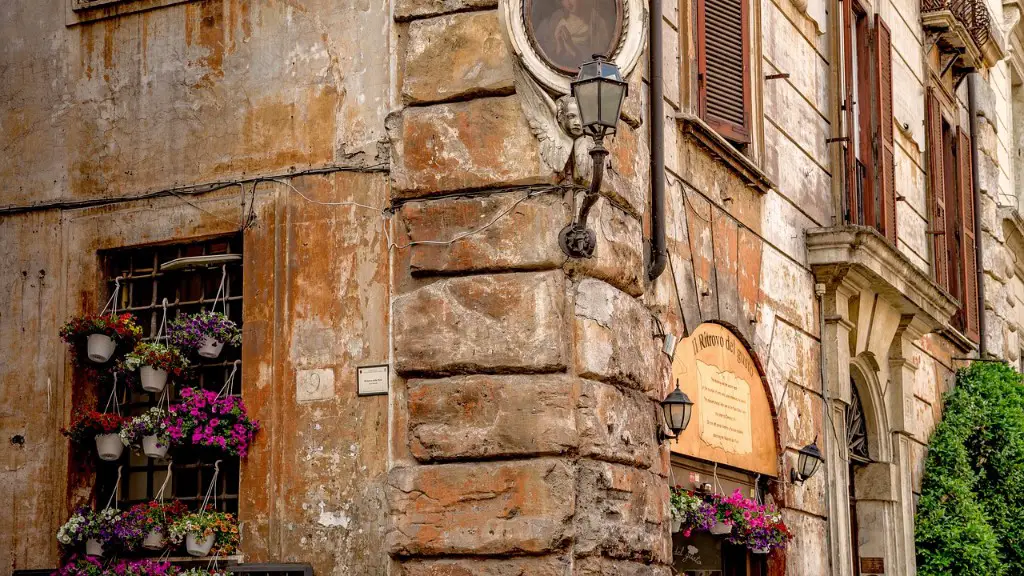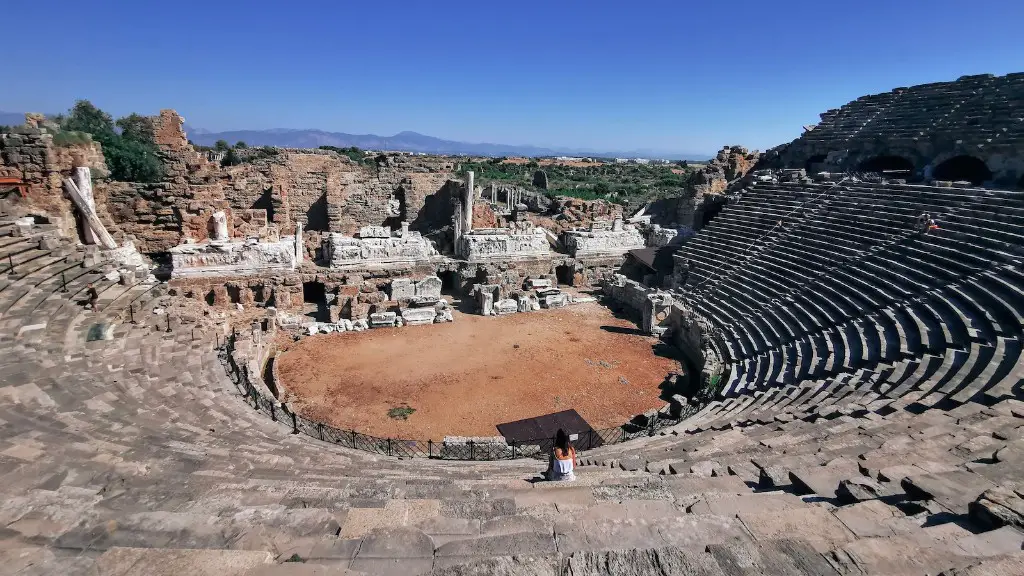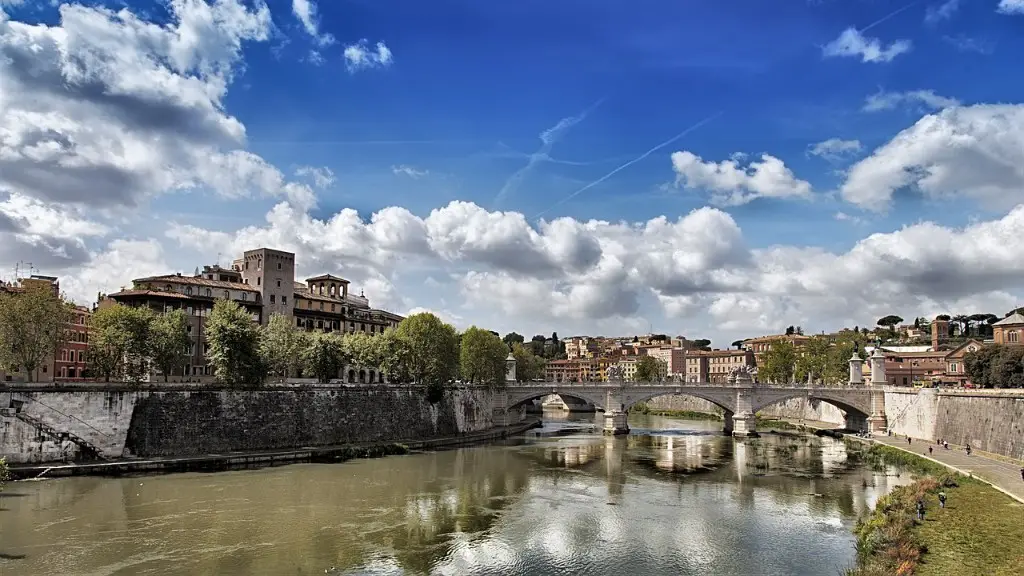Ancient Rome is one of the most enigmatic and powerful civilizations in history – and many of the principles and ideas they developed remain crucial to this day. From the structure of their government to the roads they constructed, the Roman Empire’s reach was extensive. But what resources made this power and influence possible?
One of the most important resources of Ancient Rome was its geography. Rome was located in a central position on the Italian Peninsula, with access to the Mediterranean Sea and to the mountains of the Apennines. This strategic locality placed the Romans in a powerful and influential trade-based position, with easy access to maritime trade empires and allies such as Carthage. Access to the sea, particularly, gave Rome a powerful advantage in terms of travel, military campaigns and trade, as it increased their reach and spread their control.
Another powerful resource for Ancient Rome was its people. As the population grew, so too did the military prowess of the empire. The soldiers and citizens of Rome were renowned for their commitment to the cause and their willingness to die for the Empire. Furthermore, the widespread nature of their territory ensured that they had access to a vast pool of resources such as food, minerals, timber and potential slaves.
The Roman government also implemented an innovative infrastructure, which allowed them to use their resources efficiently. The Romans created a complex and integrated network of roads, aqueducts and water systems which allowed them to effectively manage the resources available to them. For example, this infrastructure enabled them to move food, supplies and military personnel around the Empire quickly and efficiently, allowing them to make more efficient use of the resources they had.
Perhaps the most important resource in Rome’s arsenal, however, was their political ability. Under the Republic and the Empire, a system of checks and balances was established which prevented any individual from taking too much power. This allowed the Romans to maintain order, stability and civil harmony – something that allowed assets to be used in a safe and effective manner, and for resources to be devoted to military campaigns and infrastructure projects rather than to maintaining an oppressive government.
The resources available to Ancient Rome were vast, and shaped their society and its influence. With the help of geography, people, infrastructure and political resources, the Roman Empire rose to become one of the most powerful civilizations in history, and it can be argued that these same resources helped maintain it as a major power until its eventual decline.
Minerals & Agriculture
In addition to geographical resources, Ancient Rome had access to a tremendous variety of minerals and agricultural resources which helped them build their economy and develop techonology. The Romans had access to the famous silver mines of Spain, which allowed them to mint their coins and build their impressive currency-based economy. They also had access to the iron ore that was found in Britain, which allowed them to make their famed armor and weapons. Furthermore, Ancient Rome had access to a number of agricultural resources, allowing them to produce food for a large population and free up considerable resources for other projects. Access to such resources enabled Rome to maintain its impressive growth.
Religions
The religious sphere was also an important source of resources for the Romans. The religion of Ancient Rome was strongly intertwined with the state, and many cults and gods were introduced to Rome, each with its own festivals and traditions. From a practical standpoint, these religious figures and events allowed the government to take advantage of the public’s enthusiasm and use it as a source of stability and cohesion. Religion also gave Rome access to a considerable pool of human resources and volunteers, some of which could be employed in military and construction projects.
Networks & Alliances
The networks and alliances built by the Roman Empire was also a valuable source of resources. By forming international alliances, the Romans had access to resources and contacts which aided them in their political and military endeavors. Through their alliances, they could trade, share resources and military contacts, and spread their influence and power across the Mediterranean. This access to resources and support made Ancient Rome a formidable force.
Military
No discussion of Ancient Rome’s resources would be complete without mentioning its military resources. The Roman Army was renowned for its discipline and organization, making it a powerful and fearsome force on the international stage. With access to a range of weapons and armor, as well as to experienced commanders and strategists and comprehensive infrastructure, the Roman Army was an invaluable resource for the Empire, allowing them to expand and maintain their rule with relative ease.
Cultural Resources
Lastly, Ancient Rome had access to considerable cultural resources which defined their society and became part of their legacy. The architecture, literature and philosophy of the Romans were renowned and continue to influence our society today. From the impressive Pantheon and the Roman Senate to Virgil’s Aeneid, the contributions of Ancient Rome to the cultural landscape of the world is undeniable. This access to culture and knowledge enabled the spread of Roman influence and enabled the Empire to leave a lasting mark on the world.


